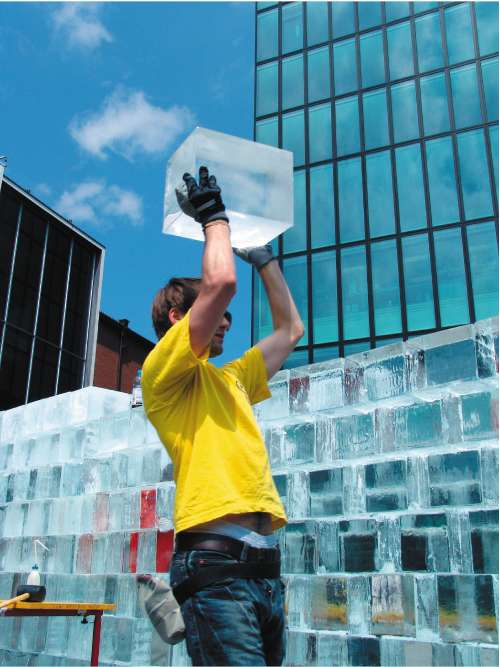Get your skates on if you want to see Tate Modern's latest installation

When Allan Kaprow built a 30ft-long ice sculpture in 1967 that began to melt as soon as it was created, some hailed it as a remarkable moment in the history of performance art. Others scratched their heads while the cynics dismissed it as a waste of time and money.
More than 40 years after Kaprow's creation in the stultifying heat of the Californian sun, the debate over the value of ephemeral artworks is to be resurrected by Tate Modern today, when the gallery will create an 8ft- high ice sculpture based on Kaprow's original artwork.
The work, Fluids, was originally commissioned by the Pasadena Art Museum in California as part of Kaprow's mid-career retrospective. Over the following decades, it has been recreated in cities across the world, including Basel, Munich and Los Angeles. This is the first time it has been replicated in Britain.
More than 20 art students will erect the Tate Modern piece over half a day. It will consist of 7.3 tonnes of ice and be left to melt over a period of five days.
The project's curator, Alice Koegel, said she wanted to encourage a discussion over what this kind of sculpture might mean for people viewing it for the first time. "In the Sixties, Kap-row built 15 structures in and around Pasadena. Some didn't understand this and others loved it. He built one near a construction site and some of the builders were disturbed because they thought he was mocking them," she said.
Kaprow began his career as a painter but became better known as a performance art pioneer. He helped coin the new term "happening", an artistic event that was created only to disappear during the late 1950s and 1960s. He worked on 200 such happenings before his death in 2006.
In 1961, he described such a creation as "a brief event", witnessed fleetingly by a group of people, which "may become like the sea monsters of the past or the flying saucers of yesterday".
He insisted these events could take place outside the confines of a gallery space. Many felt this liberated the artist and helped expand the notion of artistic creation, while doubters dismissed his work as stunts.
Kaprow did not seem to care. Having been influenced by Jackson Pollock and the avant-garde composer, John Cage, he defiantly said: "My work is by design not popular ... certain dadaistic and surreal art is designed to get a rise out of people."
In 1959, he staged a seminal event in New York's Reuben Gallery, which included performers walking and reading loudly to viewers. In the following years, he put his artwork in gymnasiums, chicken farms and car parks.
One of his best known works, Yard, consisted of a courtyard filled with car tyres heaped randomly for viewers to climb around. Another work, Scales, involved placing blocks of cement on stairwells, which will also be repeated inside Tate Modern. The event is part of UBS Openings: Saturday Live, a bi-monthly programme of performance art at the gallery.
Other artists who have created temporary works include Cristo, who specialises in wrapping buildings, including the Reichstag in Germany, and Douglas Fishbone, who erected a giant banana sculpture in Trafalgar Square, consisting of 30,000 pieces of fruit.
Join our commenting forum
Join thought-provoking conversations, follow other Independent readers and see their replies
Comments